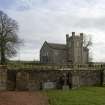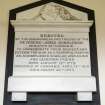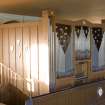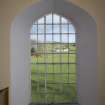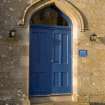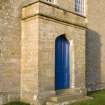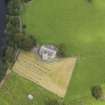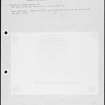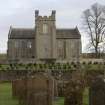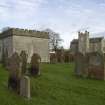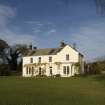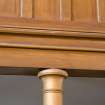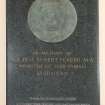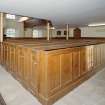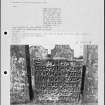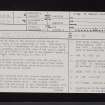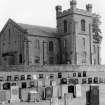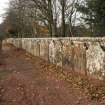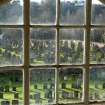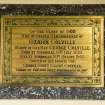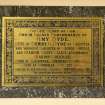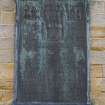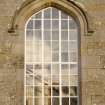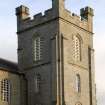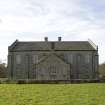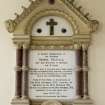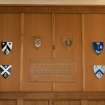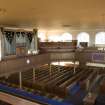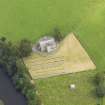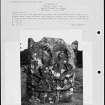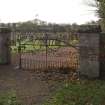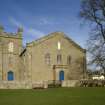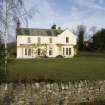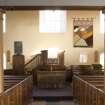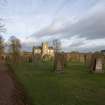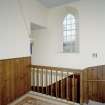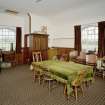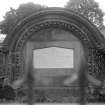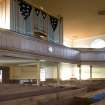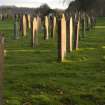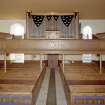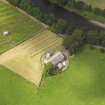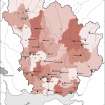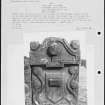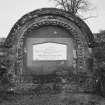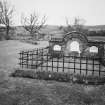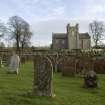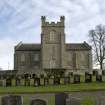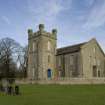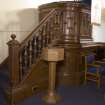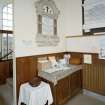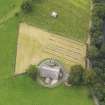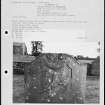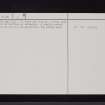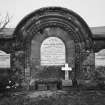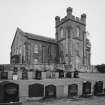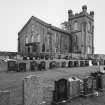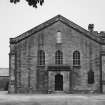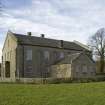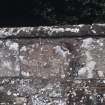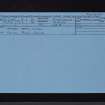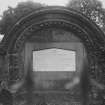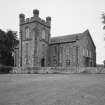Pricing Change
New pricing for orders of material from this site will come into place shortly. Charges for supply of digital images, digitisation on demand, prints and licensing will be altered.
Upcoming Maintenance
Please be advised that this website will undergo scheduled maintenance on the following dates:
Thursday, 9 January: 11:00 AM - 3:00 PM
Thursday, 23 January: 11:00 AM - 3:00 PM
Thursday, 30 January: 11:00 AM - 3:00 PM
During these times, some functionality such as image purchasing may be temporarily unavailable. We apologise for any inconvenience this may cause.
Canonbie Parish Church
Burial Ground (Medieval) - (20th Century), Church (Medieval) - (19th Century), Church (19th Century) (1822), War Memorial (20th Century)
Site Name Canonbie Parish Church
Classification Burial Ground (Medieval) - (20th Century), Church (Medieval) - (19th Century), Church (19th Century) (1822), War Memorial (20th Century)
Alternative Name(s) Canonbie, St Martin's Church; Church Of Liddel; Canonbie Church & Burial-ground; Donaldson Monument; United Parish Church Of Canonbie
Canmore ID 67527
Site Number NY37NE 6
NGR NY 39501 76328
Datum OSGB36 - NGR
Permalink http://canmore.org.uk/site/67527
- Council Dumfries And Galloway
- Parish Canonbie
- Former Region Dumfries And Galloway
- Former District Annandale And Eskdale
- Former County Dumfries-shire
NY37NE 6 39501 76328
See also NY47NW 4.
What was probably part of a sedilia from the priory NY47NW 4 is built into a tomb situated near the E side of the burial ground; and late 16th century grave-slabs are built into the N wall of the burial ground.
RCAHMS 1920.
The church of Liddel, as it was originally known, should not be confused with the similarly-known church of Castletown. It is first mentioned in 1220 when a prior is recorded, as is a chaplain serving the church, which is evidently the religios house of Liddel granted previous to this date to Jedburgh by Turgot de Rossedale. The priory, which would thus appear to have possessed a parochial aisle, remained a cell of Jedburgh, though not until the 17th century is it clearly established that parish and priory were interdependent.
I B Cowan 1967.
Nothing can be seen of the medieval parish church of Canonbie, which is first mentioned in 1220. Dedicated to St Martin, it was a dependency of the nearby priory (NY47NW 4) and probably stood in the area of the burial ground (centred NY 3937 7628) to the WSW of the present church (NY 3943 7633), which was built in 1822.
RCAHMS 1981, visited November 1980.
Statistical Account (OSA) 1795.
Mr J Waugh (Session Clerk) believes that the present Canonbie parish church, also dedicated to St Martin, occupies the site of the earlier church noted above. The alleged sedilia transferred from the priory to the churchyard between 1815 and 1854 (J and R Hyslop 1912) now forms part of the Rev James Donaldson's tomb at NY 3943 7627. It takes the form of a Norman arch but cannot be verified as authentic. A similar arched tomb is to be seen in the graveyard a few metres away.
Information from OS (IF), 20 August 1981.
Church [NAT] (at NY 3950 7632)
Vault [NAT] (at NY 3943 7627)
OS 1:10,000 map, 1983.
Canonbie Parish Church, by William Atkinson, 1821-2. Large buttressed and ashlar-walled box with an uncrenellated parapet at the gables. Two tiers of windows, Tudor-arched below, four-centred above. N and S porches with low parapets. Projecting from the centre of the long W side, a tower with set-back buttresses and a battlement rising into square corner turrets. This is of three stages, the bottom and top with hoodmoulded four-centred openings, the second with a pointed light in each face. Inside, cast-iron columns supporting a gallery round the N, S and W sides, its front simply panelled. Boxy pews, late 19th century pulpit in the centre of the E wall.
Graveyard to the W. Across its centre, a long line of 18th century headstones, some aedicular, decorated with heraldry, angels' heads (souls), and reminders of death, several with flowers spiralling up the sides, many given charm by the ineptness of execution. To the E of this line, a large and sqaure late Georgian mausoleum, with a hoodmoulded and pointed door in its N face. E of this, the monument to the Rev. James Donaldson (died 1854). It is placed in a 13th century round-arched recess, perhaps of a tomb, the only surviving fragment of Canobie priory; dogtooth enrichment of the arch, the hoodmould's left label stop with knotted zoomorhic carving, the right floriated. On the back of this monument, a small weathered wall monument, probably of the 18th cent: aedicular, with a large coat of arms in the pediment.
J Gifford 1996.
NMRS REFERENCE
Architect: William Atkinson 1822. Contractor: Gregan and Crichton. John Nicholson paid for C I windows £85 4s 6d.
EXTERNAL REFERENCE
PUBLIC LIBRARY
'Border Magazine,' May 1899 - 1 photograph.
SCOTTISH RECORD OFFICE
Buccleuch Muniments. Chamberlain's Accounts.
GD 224/527/6, 1824-25, P. 42 - information on payment to architect.
Field Visit (27 March 1915)
Tomb, Churchyard, Canonbie.
A fragment of 13th-century ecclesiastical work is preserved within the churchyard of Canonbie Parish. It lies to the south of the modern church and within recent years has been utilised in the construction of a tomb enclosure - that of the Rev. James Donaldson, late minister of Canonbie.
It consists of a recess, 4 feet 8 inches wide and 4 feet 4 inches high, with a segmental arch of roll-and-hollow mouldings enriched with a dog-tooth ornament. These mouldings are carried down the jambs to a stop at a sill; above is a hood-moulding terminating at either side in label-stops-one knotted and zoomorphic, the other floriated. The back appears to be modern. From its position in a portion of the south wall of the old parish church it has been suggested that this fragment was the sedilia, although the design is unusual for such a construction.
Several graveslabs of no great interest, dating from the end of the 16th century, are built into the north wall of the churchyard near the entrance.
RCAHMS 1920, visited 27 March 1915.
Field Visit (November 1980)
Canonbie, Parish Church and Burial-ground NY c. 394 763 NY37NE 6
Nothing can be seen of the medieval parish church of Canonbie, which is first mentioned in 1220. Dedicated to St Martin, it was a dependency of the nearby priory (NY47NW 4) and probably stood in the area of the burial-ground to the WSW of the present listed church, which was built in 1822.
RCAHMS 1981, visited November 1980
(Stat Acct, xiv, 1795, 426; Cowan 1967, 26)
Note (1997)
NY37NE 6 3950 76328
Canonbie. Listed as church, burial-ground and architectural fragment.
RCAHMS 1997.












































































